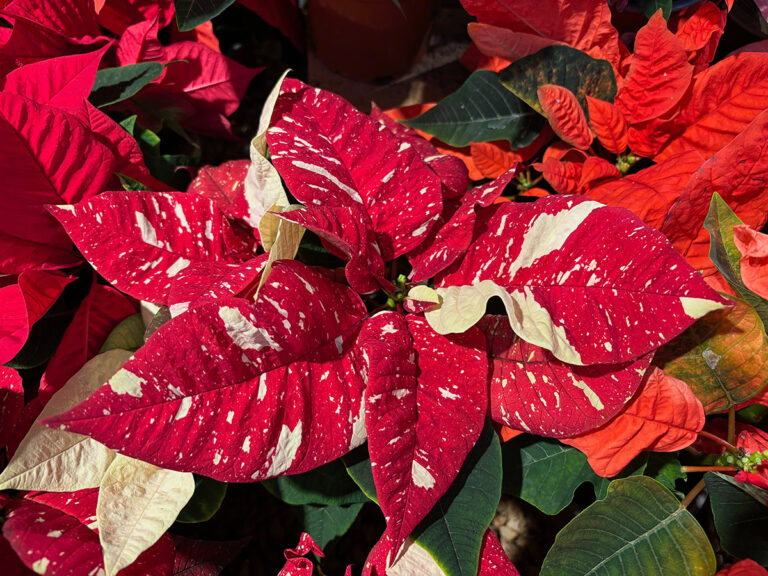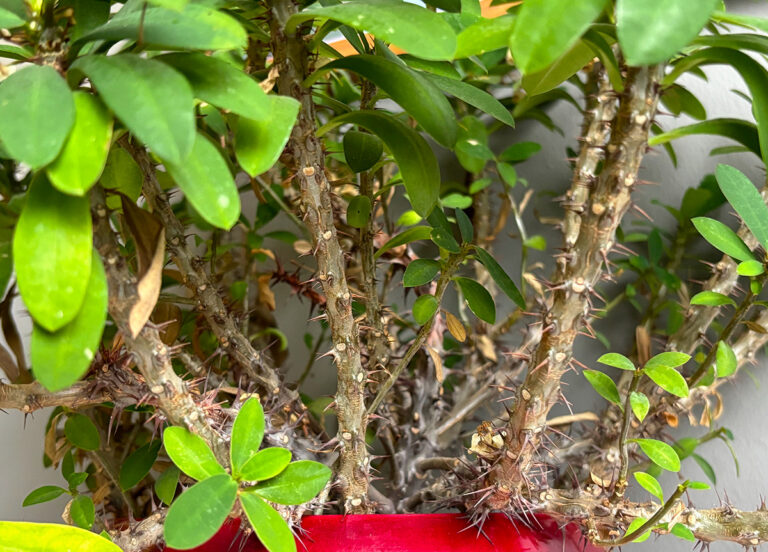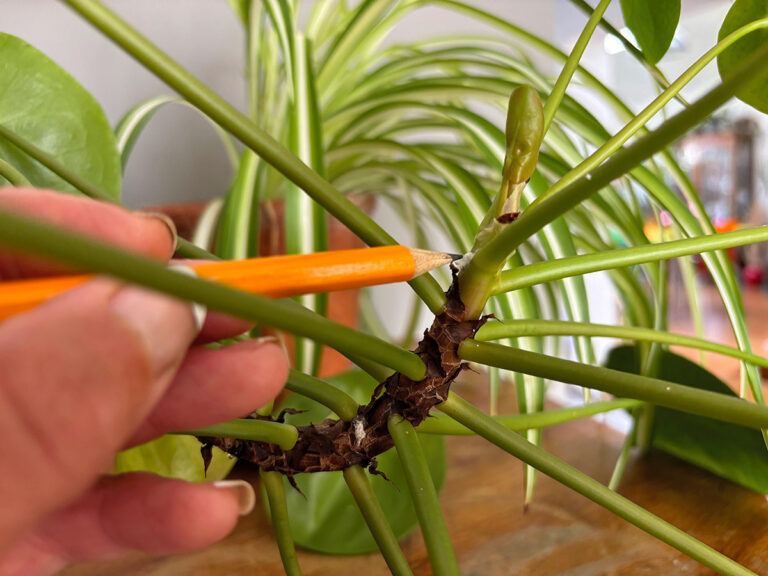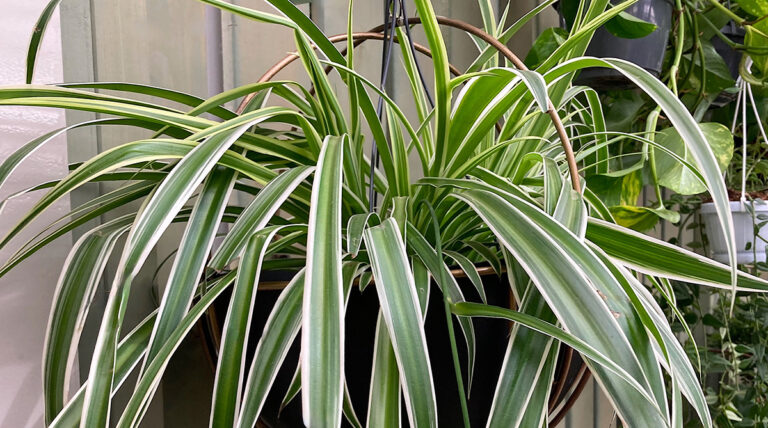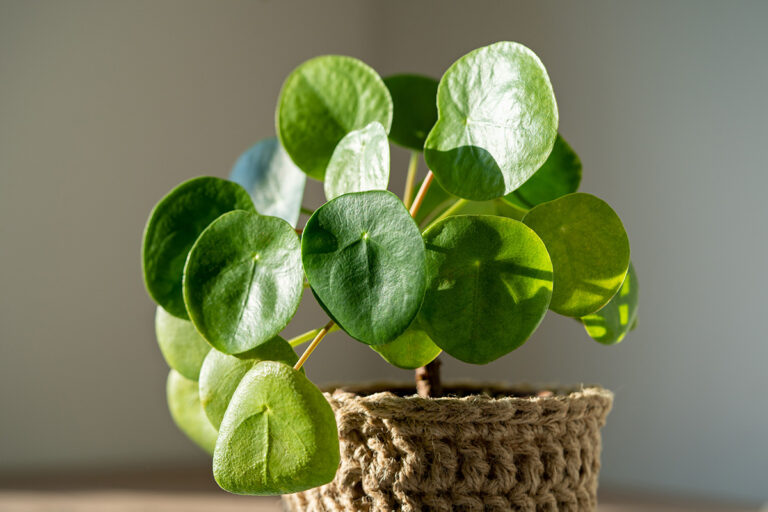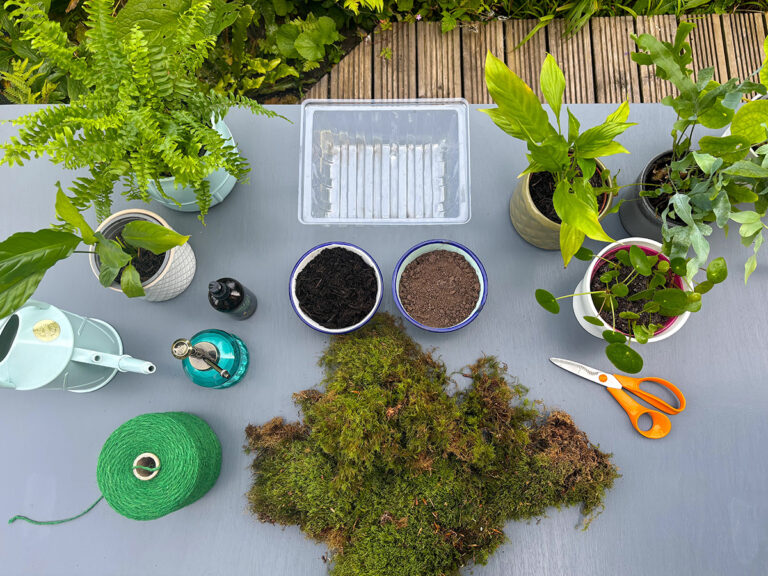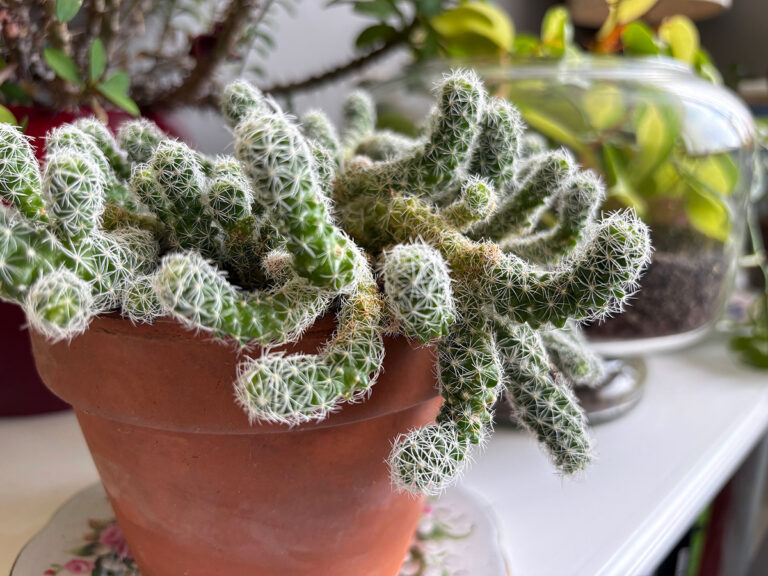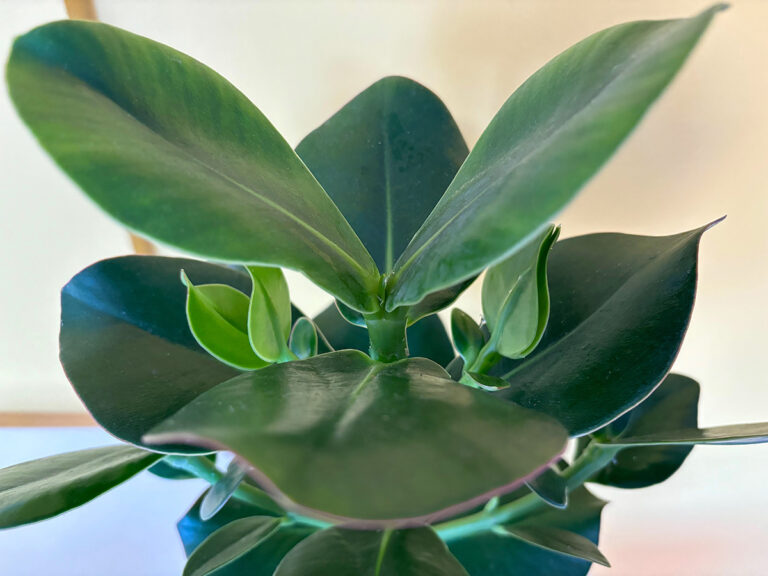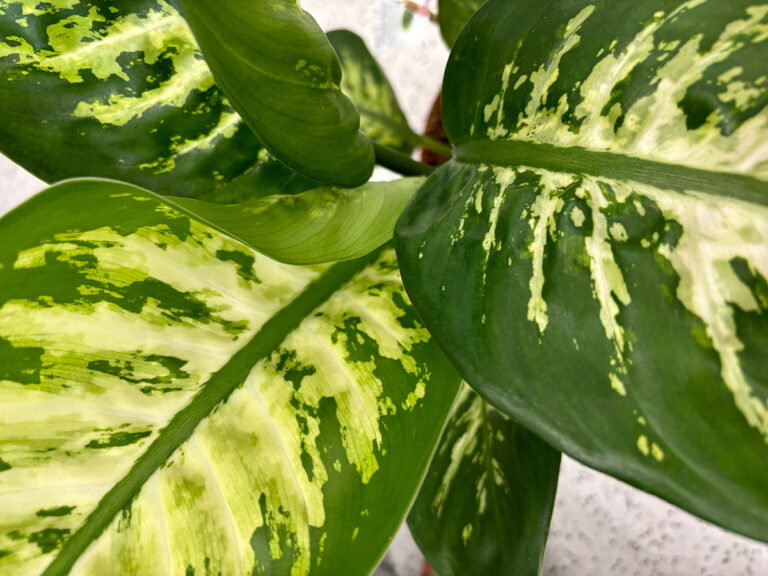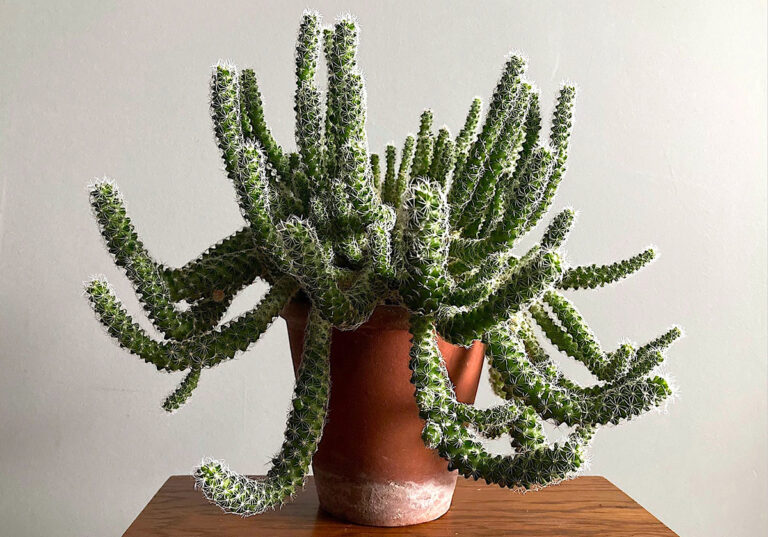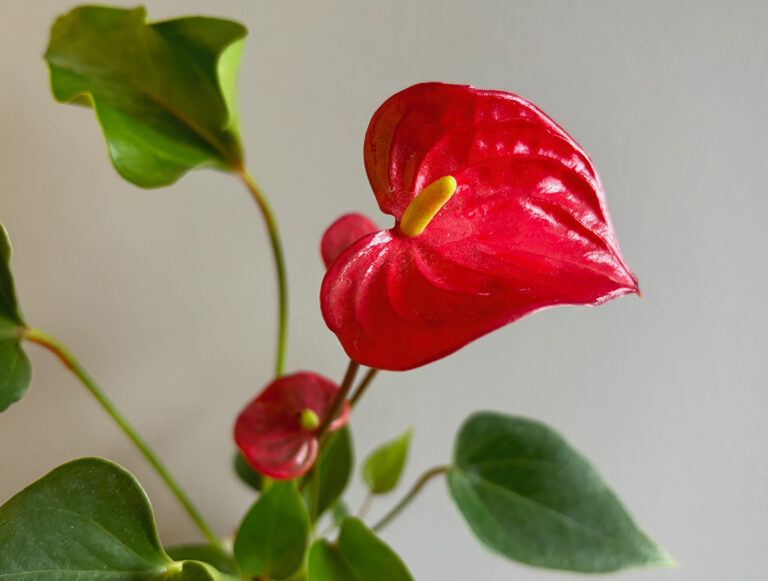November brings shorter days and lower light levels. Gardeners can find themselves spending more time indoors which is tricky for people who enjoy having their hands in the soil caring for plants so one solution is to bring the garden inside and fill your shelves with houseplants.
Peace Lily, Spathiphyllum wallisii, is in the Araceae family, commonly known as Aroids. It is an elegant dark, glossy foliage plant, which has tiny pure white flowers, or inflorescence, on spikes encased by protective hooded bracts, or spathes. Its latin name, Spathiphyllum, is derived from the Greek words: ‘spath’ meaning spoon, and ‘phyl’ meaning leaves which is a very literal description.
Spathiphyllum wallisii, is one of 40 species of Peace Lily’s and it was first introduced to Europe in 1870 after being discovered in Colombia. Although Peace Lily’s are incredibly easy to look after, there are a few integral points that need considering. Here are some top tips to keep your Spathiphyllum happy.
Light
Peace Lily’s are naturally at home in Central America tropical climes; they live in partial shade on forest floors and are well adapted to dappled light and humidity. In our modern homes this combination is perfectly recreated in warm, steamy bathrooms where bright but indirect light will keep them flowering profusely.
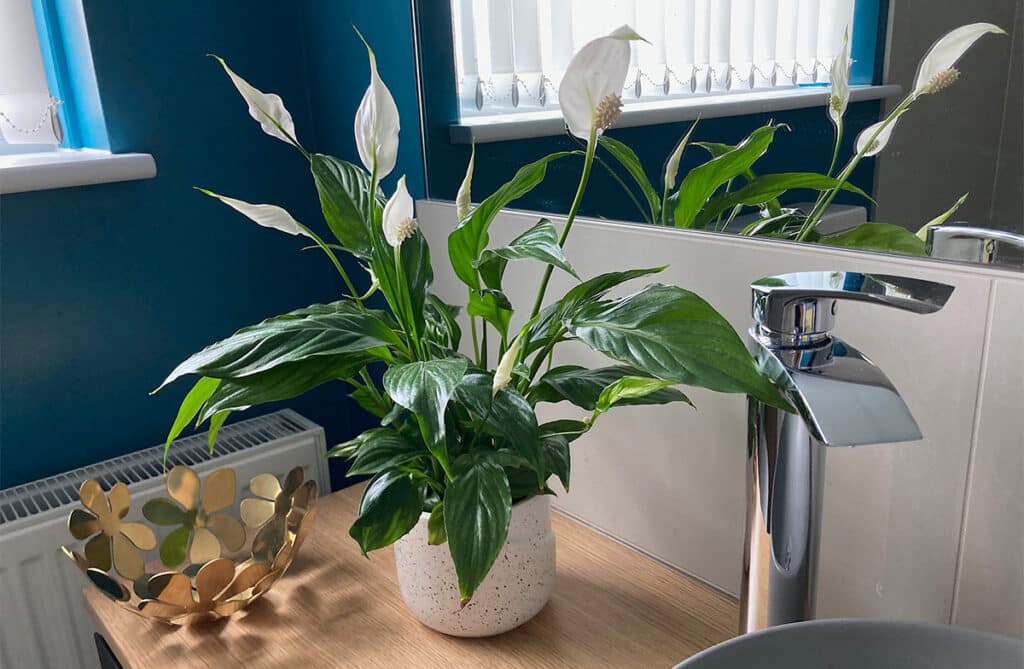
Water
These stylish evergreens like moisture but are very tolerant of underwatering, in fact overwatering will cause far more damage than forgetting to water as they detest soggy roots. When Peace Lily’s are thirsty they will let you know by drooping; water them and they will perk up. Wait until the top inch of your pot’s soil is dry before watering again. Use rainwater or distilled as Peace Lily’s are not fans of tap water minerals.
Humidity is key so keep Peace Lily’s away from air-drying radiators and group pots together as this will help to raise humidity or pop a water-filled tray of pebbles under the pots. The humid environment of a kitchen or bathroom is ideal but if you are looking to place your Peace Lily elsewhere keep their leaves moist with Plantsmith’s Perfecting Houseplant Care Mist.
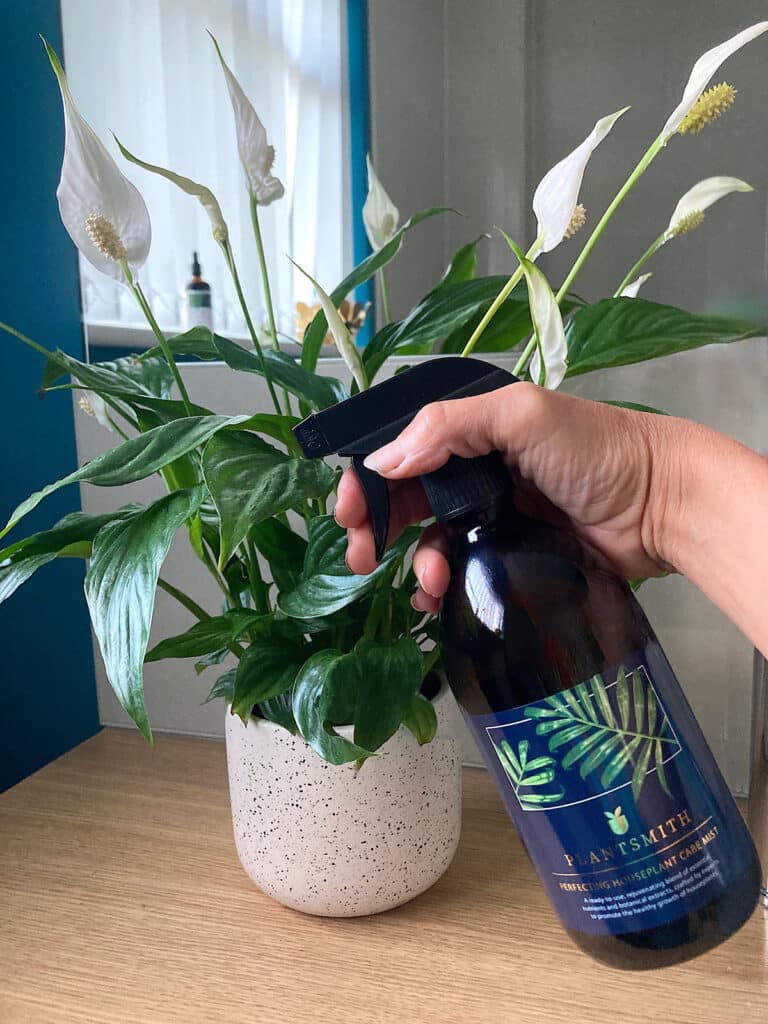
Temperature
Our homes provide apt growing conditions as Peace Lily’s require temperatures ranging from 18°C to 27°C (65°F to 80°F) but can tolerate down to 13C (55F); so they will happily grow even if you have to be very frugal with the central heating this year. A cooler winter will promote spring flowering.
Soil
Make sure your houseplant’s soil is free draining so excess water can drain away. It is good to compile your own houseplant growing medium mix to get a balance between nutritious soil and drainage. Mix together peat-free compost, perlite for aeration, horticultural sand and coir. This will provide a good free draining substrate. Alternatively, if you do not have the time or inclination to create your own, buy a houseplant or cactus compost mix straight off the shelf.
Feeding
Peace Lily’s are not heavy feeders. Throughout spring and summer dilute a few splashes of Plantsmith’s Fortifying Houseplant Feed and Tonic into a watering can and feed every three to four weeks. Stop feeding late autumn and allow your plant to have a period a dormancy, we all need a rest over winter!
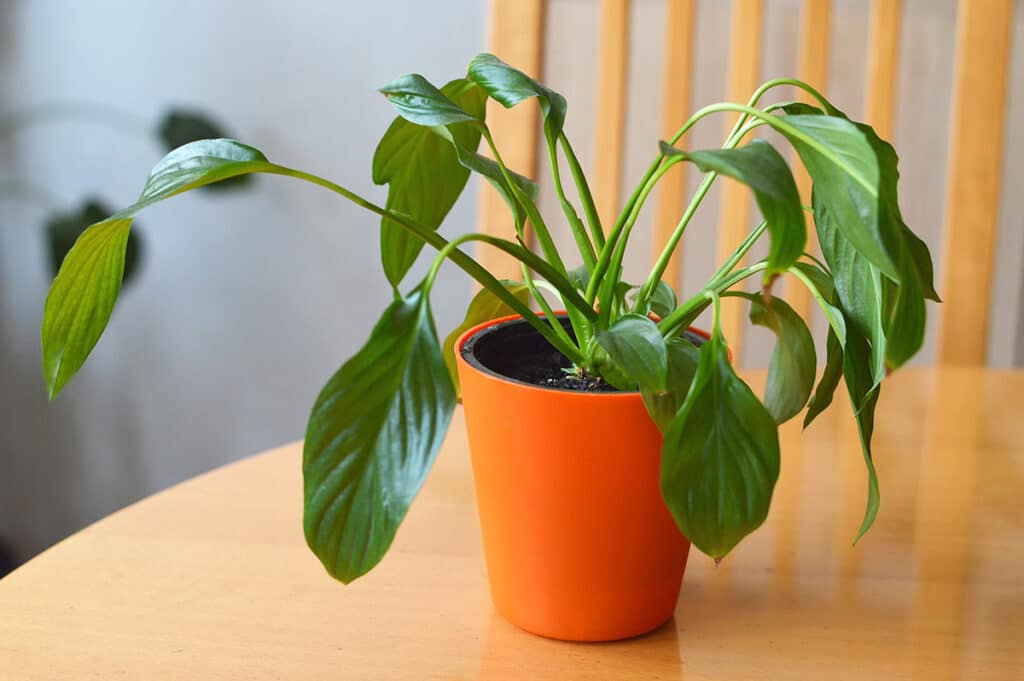
Flowering
Flowering naturally occurs around spring and early summer and can also flower again in autumn. Deadhead once bracts have faded.
Plants only start flowering once mature and their habitat conditions are favourable; humid, moist conditions and indirect light are a must. If your plant just will not flower then try positioning it in an area of lower light and cooler temperatures and then after a few weeks bringing it out into brighter light and warmth again, this could kick start the process.
Propagation
The simplest way to propagate a Peace Lily is by division. Healthy plants throw up shoots outward from the mother plant so remove your plant from its pot and gently shake off the soil; carefully tease shoots away into smaller separate sections and pot these individual clumps up.
Pests
Mealy bugs are an absolute pest. They are white, fluffy and have the appearance of tiny balls of cotton wool on the underside of leaves and wedged in the base of stems. They can be tricky to get rid of but if you notice you have an infestation of these sap-suckers, move your plant away from all other plants, wipe off the visible bugs with a piece of kitchen roll and spray with Plantsmith Protecting Bug Control Spray.
Fungus gnats can also be a pain as they thrive on moist soil. If you see these tiny flies on the soil surface, reduce your watering schedule. You can also dunk your pot in a bucket of water to try and flush these flies out and then let your pot drain through to avoid waterlogging.
Problem Solver
Peace Lily’s can be susceptible to root rot if overwatered so strike that balance between keeping your plant hydrated but not saturated. So if leaves start going yellow and your plant loses its vigour it is worth removing from its pot to check the root situation. If you find mushy roots, wash off old soil and repot in fresh, gritty compost.
If your Peace Lily gets too much direct bright light the tips of leaves can turn brown so move to a shadier location.
Note: Peace Lilies contain oxalates which are toxic to cats and dogs so make sure your plant is positioned out of harms way.





